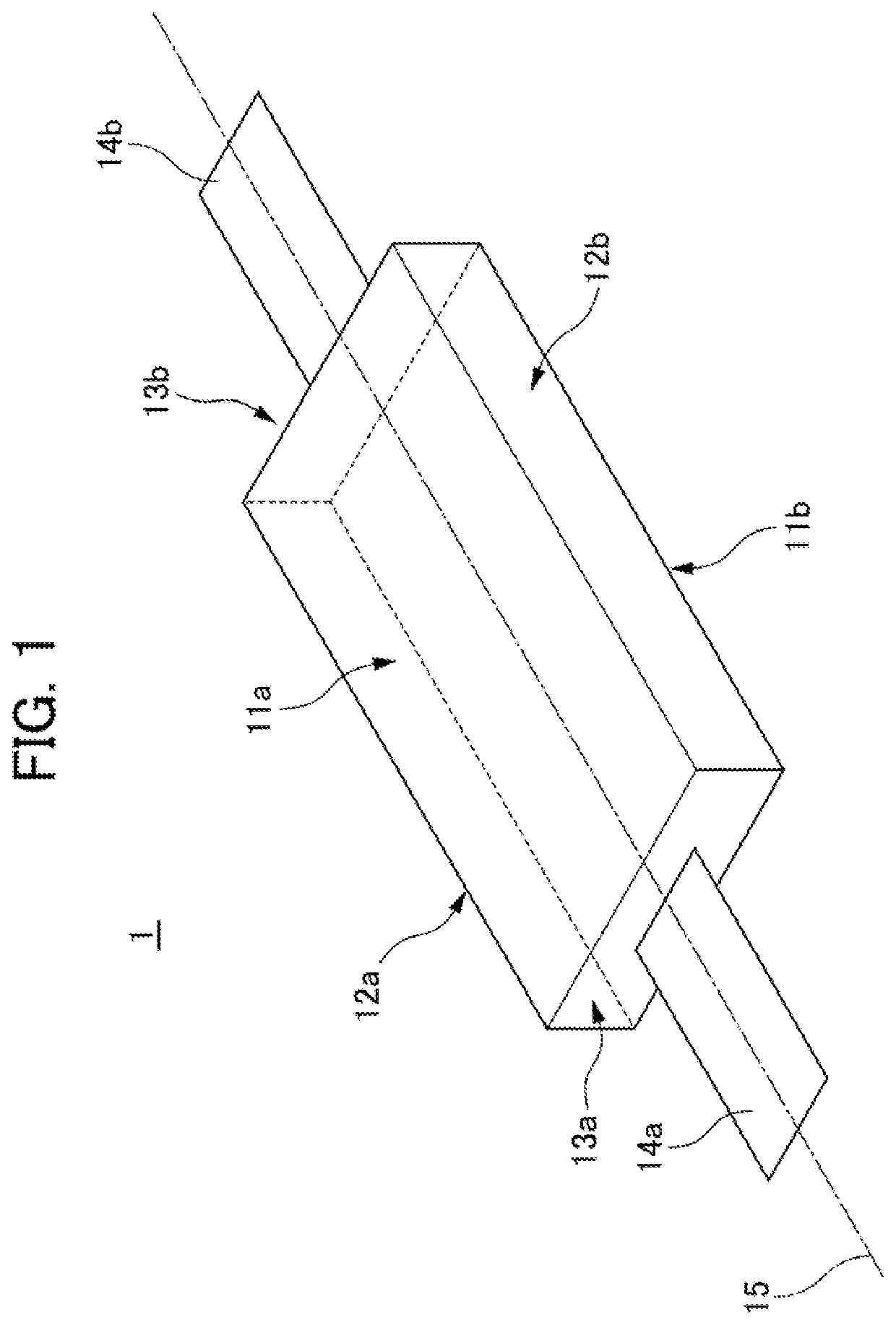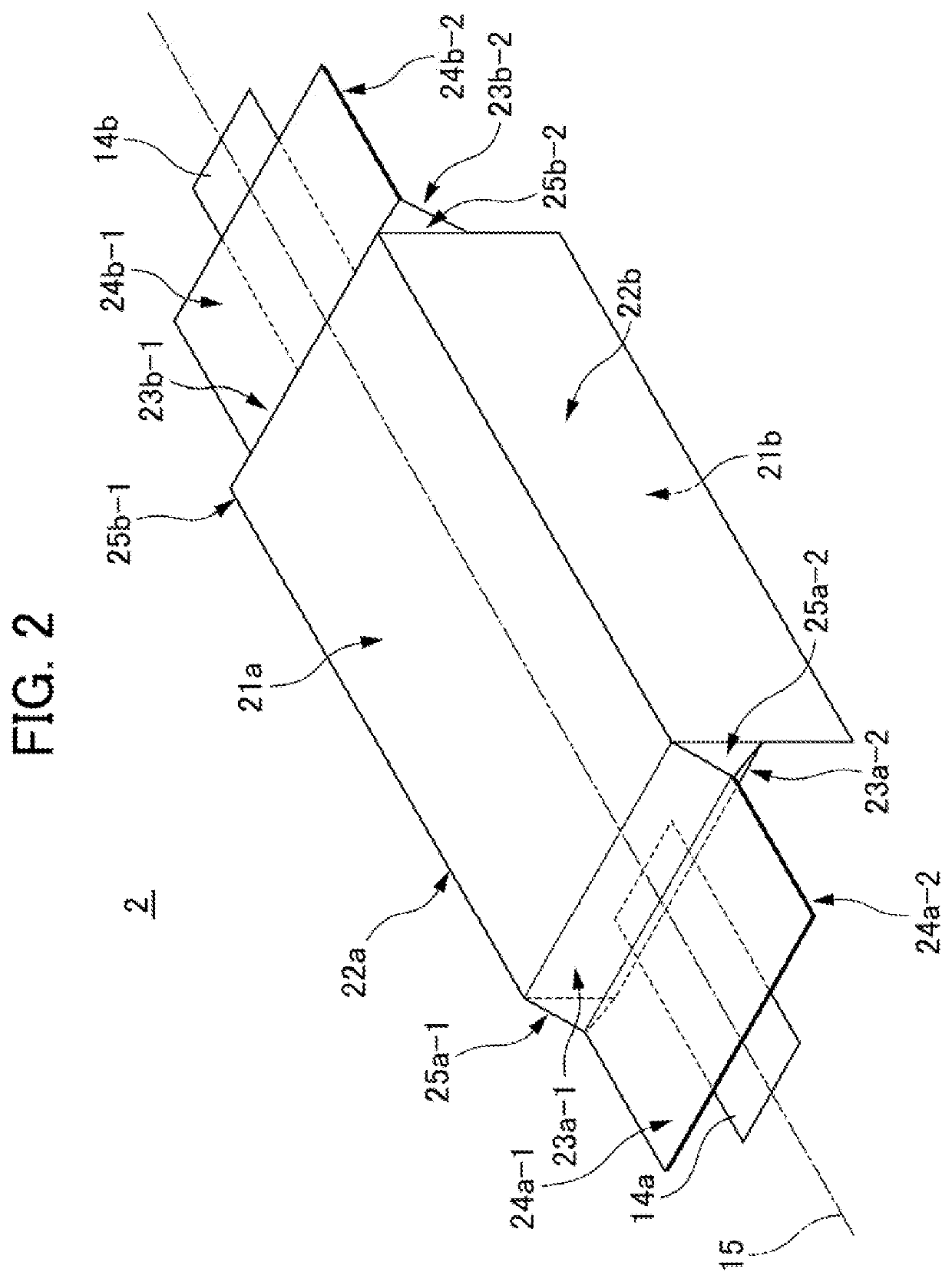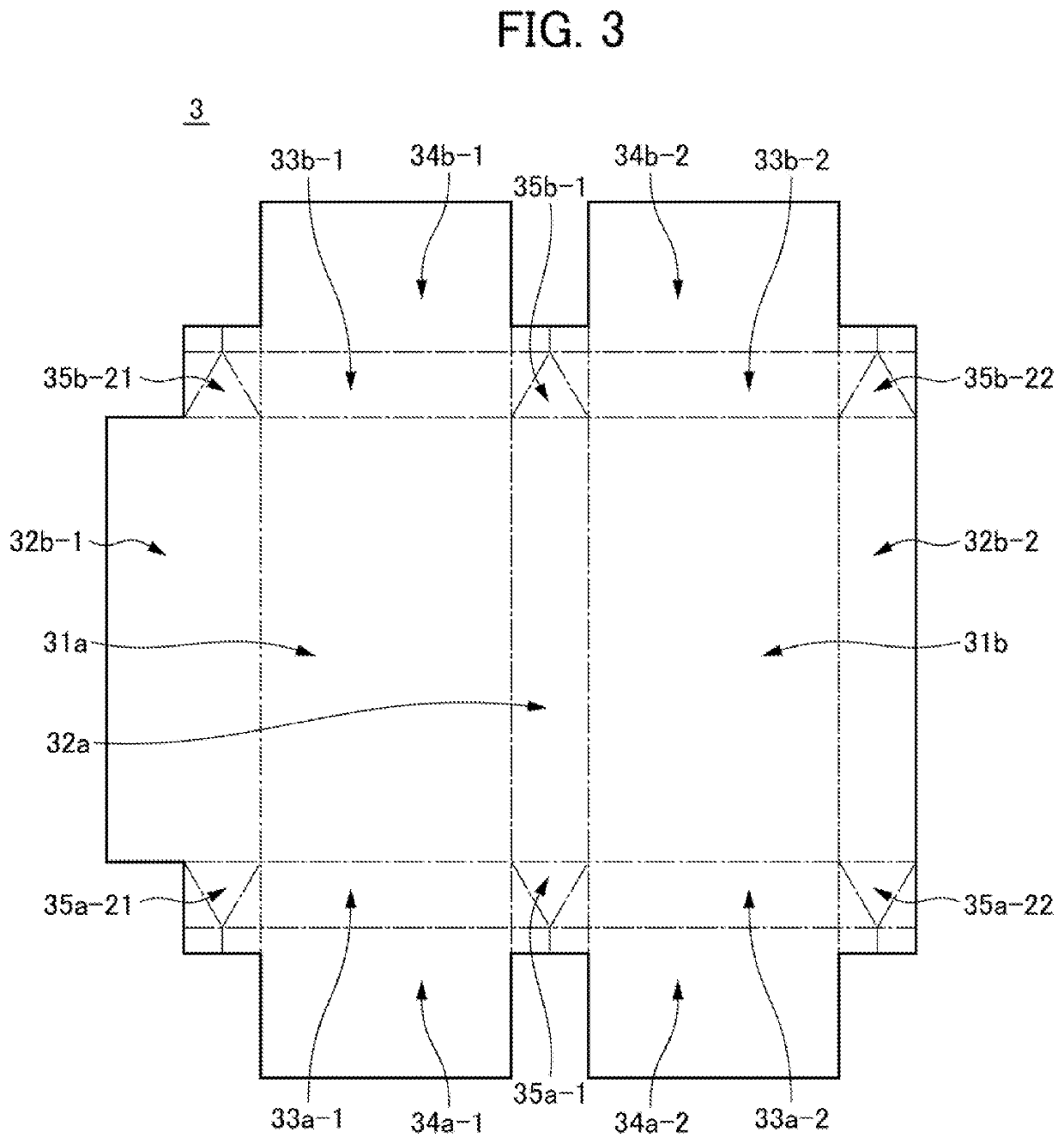Battery cell
a battery cell and battery technology, applied in the field of batteries, can solve the problems of battery cell damage, difficulty in efficiently stacking battery cells, etc., and achieve the effect of avoiding positional shift, avoiding battery damage, and easy damag
- Summary
- Abstract
- Description
- Claims
- Application Information
AI Technical Summary
Benefits of technology
Problems solved by technology
Method used
Image
Examples
Embodiment Construction
[0025]Hereinafter, one embodiment of the present invention will be described in detail with reference to the drawings.
[0026]A battery 1 of the present invention is an all-solid-state battery in the embodiment, and is in a rectangular parallelepiped shape as shown in FIG. 1. The battery 1 has six surfaces including a top surface 11a, a bottom surface 11b, side surfaces 12a, 12b, and end surfaces 13a, 13b. Assuming a center axis 15 connects the centers of the end surfaces 13a, 13b to each other, each of collection tab leads 14a, 14b is provided to extend in the direction of the center axis 15 from a corresponding one of the end surfaces 13a, 13b. The all-solid-state battery is brittle and easily damaged particularly at a corner portion and a surface portion (an end surface portion), and for this reason, is more suitable for application of the configuration of each embodiment of the present invention.
[0027]FIG. 2 shows a battery cell 2 configured such that the battery 1 of the present ...
PUM
| Property | Measurement | Unit |
|---|---|---|
| shape/dimension | aaaaa | aaaaa |
| volume energy density | aaaaa | aaaaa |
| surface pressure | aaaaa | aaaaa |
Abstract
Description
Claims
Application Information
 Login to View More
Login to View More - R&D
- Intellectual Property
- Life Sciences
- Materials
- Tech Scout
- Unparalleled Data Quality
- Higher Quality Content
- 60% Fewer Hallucinations
Browse by: Latest US Patents, China's latest patents, Technical Efficacy Thesaurus, Application Domain, Technology Topic, Popular Technical Reports.
© 2025 PatSnap. All rights reserved.Legal|Privacy policy|Modern Slavery Act Transparency Statement|Sitemap|About US| Contact US: help@patsnap.com



